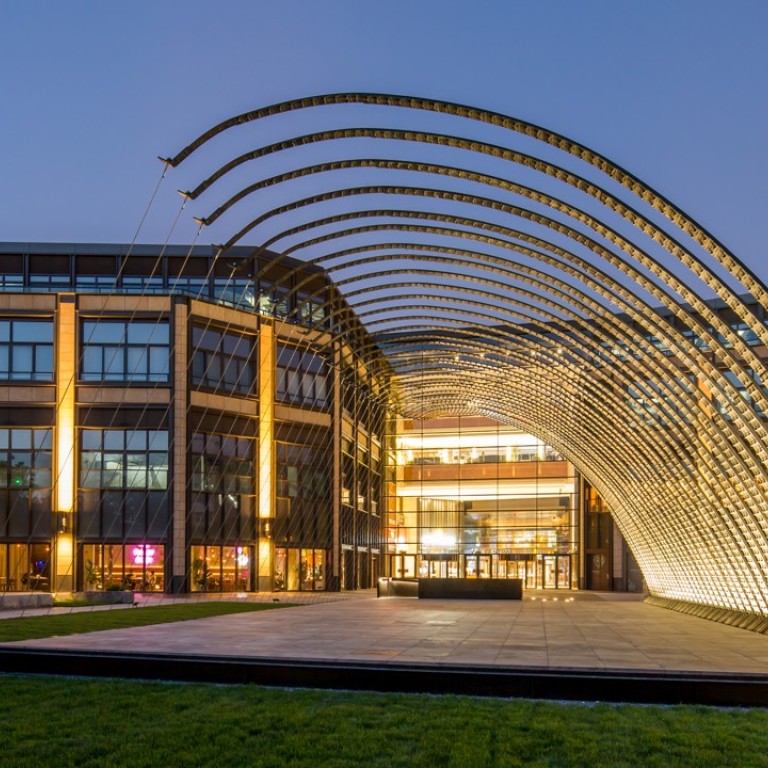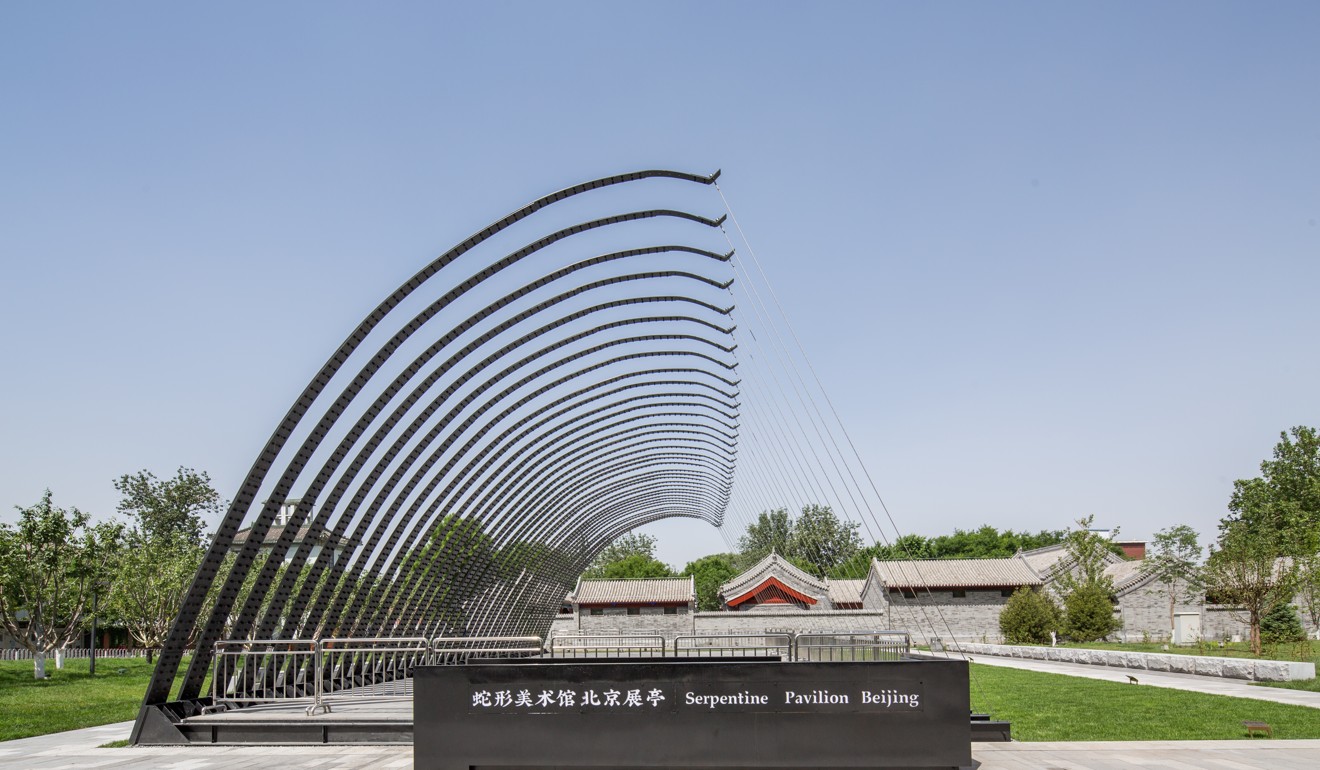
Serpentine Gallery London’s Beijing pavilion and the architect behind its imposing black arches in Wangfujing
Modelled on the Serpentine’s annual summer pavilion in London and the first built outside the UK, Beijing space will be used from May to October for arts, music and yoga workshops, food tastings, film screenings, and talks with artists
Rising from the sprawling lawn like a tidal wave next to a new shopping centre in Wangfujing commercial district, in downtown Beijing, it’s hard to miss the gigantic curved beams that make up part of the first Serpentine Gallery pavilion built outside the UK.
Inspired by Confucianism and a flexed Chinese archer’s bow, the imposing black arched structure is about retention and balance, according to its designer, Chengdu-based architect Liu Jiakun.
In Western archery, the archer pulls back the bowstring and shoots, unlike what Chinese archers do, he explained.
CCTV HQ architect Rem Koolhaas’ firm reveals its first Hong Kong project
“Chinese archers don’t release the bow immediately [as a meditation practice] … the idea of maintaining self-balance while being charged with energy [from the fully flexed bow] comes from the East. What we want to achieve is a spatial installation that … pushes the boundaries of contemporary architectural practice,” Liu said.
Now in his 60s, Liu is known for his minimalist and elegant designs. His works include the Luyeyuan Buddhist Sculpture Museum in Chengdu, southwest China, a collection of stone structures by a river that makes ingenious use of natural lighting.
His style is in stark contrast to the flamboyant and garish contemporary structures that have been popping up across China in recent years to show off the country’s growing wealth and power.

Next to WF Central, a flashy new mall developed by Hongkong Land, the Beijing pavilion will be used for arts, music and yoga workshops, food tastings, film screenings, talks with artists and family parties from May to October.
Built in 1970, the Serpentine Gallery is a contemporary art space in Hyde Park in London; its name came from the neighbouring Serpentine Lake. Since 2000, the art space has commissioned a leading architect each year to design a temporary summer pavilion on its lawn to hold arts and cultural events. Among those to have taken part are Sou Fujimoto, Ai Weiwei and the late Zaha Hadid.

Raymond Chow, executive director of Hongkong Land, explained how the extension of that concept to the Chinese capital came about.
“When we were in the UK, we were impressed by the Serpentine Pavilion concept, which lets architects showcase their talent. Our real estate industry is also closely related to architecture. The presence of the large lawn [next to the mall] allows for this innovative collaboration,” he said.
Arts and architecture could enrich the luxury shopping experience, he said.
Saving Yangon’s colonial buildings is about heritage, but also profit
The Serpentine Galleries’ chief executive, Yana Peel, who was on the panel that selected the winning design for the Beijing pavilion, said Liu’s design was a good match for the open space of its lawn setting, and for Wangfujing’s history. Dating back to the Yuan dynasty (1271-1368), Wangfujing has long flourished as a commercial hub and royal enclave, with imperial princes’ residences that have been conserved to this day.
The Serpentine’s artistic director, Hans Ulrich Obrist, said the Beijing pavilion model could be exported to other cities.

